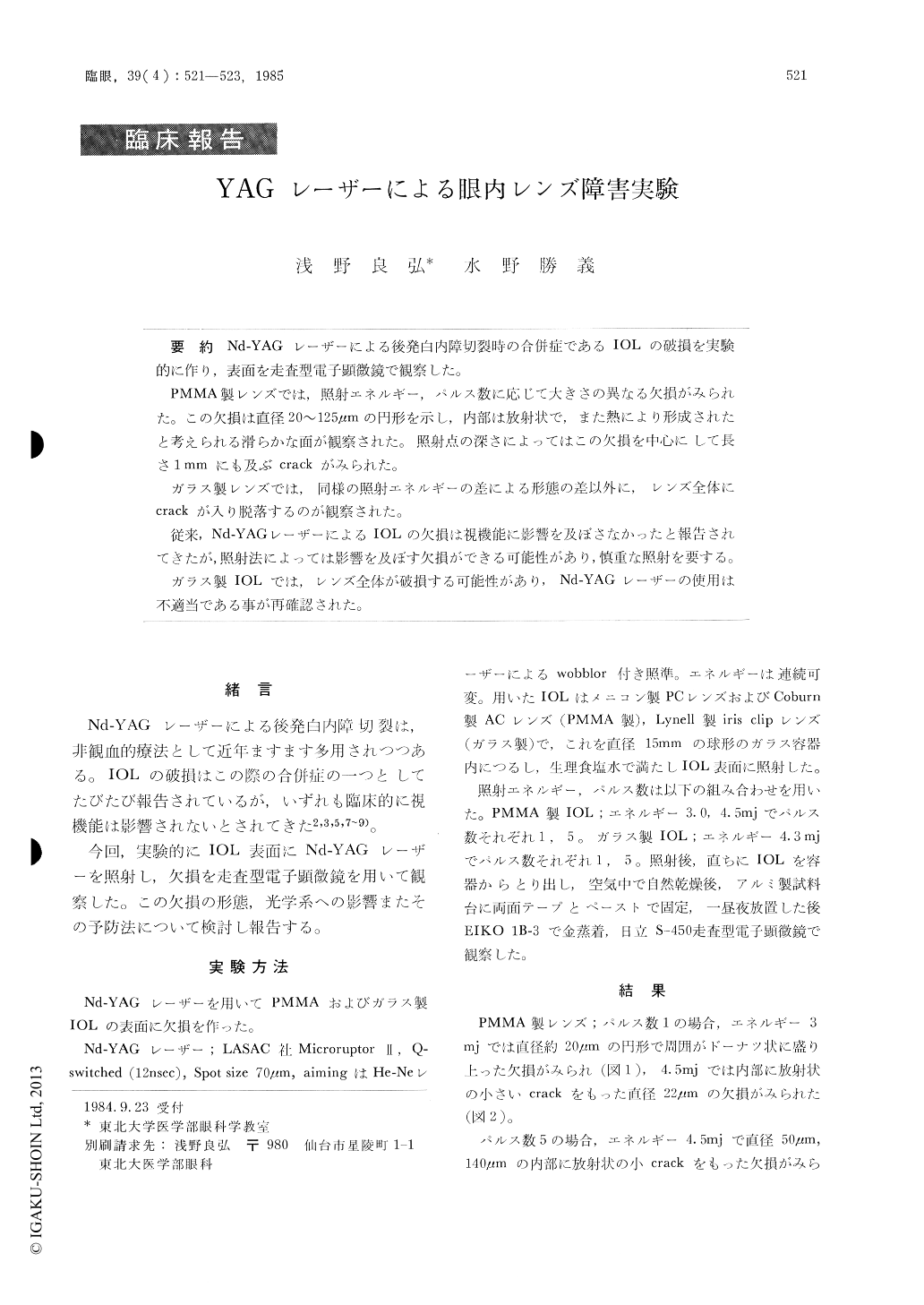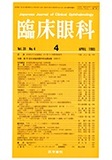Japanese
English
- 有料閲覧
- Abstract 文献概要
- 1ページ目 Look Inside
Nd-YAGレーザーによる後発白内障切裂時の合併症であるIOLの破損を実験的に作り,表面を走査型電子顕微鏡で観察した.
PMMA製レンズでは,照射エネルギー,パルス数に応じて大きさの異なる欠損がみられた.この欠損は直径20〜125μmの円形を示し,内部は放射状で,また熱により形成されたと考えられる滑らかな面が観察された.照射点の深さによってはこの欠損を中心にして長さ1mmにも及ぶcrackがみられた.
ガラス製レンズでは,同様の照射エネルギーの差による形態の差以外に,レンズ全体にcrackが入り脱落するのが観察された.
従来,Nd-YAGレーザーによるIOLの欠損は視機能に影響を及ぼさなかったと報告されてきたが,照射法によっては影響を及ぼす欠損ができる可能性があり,慎重な照射を要する.
ガラス製IOLでは,レンズ全体が破損する可能性があり,Nd-YAGレーザーの使用は不適当である事が再確認された.
We evaluated the possible damages inflicted upon the intraocular lenses as a complicatoin of capsu-lotomy by Nd-YAG laser. Q-switched YAG laser was applied directly to intraocular lenses made of PMMA or glass. Scanning electron microscopic studies showed pits or cracks in both lens types. The crack in the PMMA lens measured maximally 1mm in length. In a glass lens, the entire piece was broken into pieces after only 2 laser applications. Throughout the present experiment, the power out-put was between 3.0 and 4.5mJ, usnig either a single pulse or a train of five.
The present findings indicate that the use of Nd-YAG laser is contraindicated in psuedophakic eyes implanted with glass lens. An accurate aiming with minimum power output is essential to eliminate the hazards. It is advocated to use suitable contact lenses such as Mizuno Trabeculolens or Abraham lens.

Copyright © 1985, Igaku-Shoin Ltd. All rights reserved.


